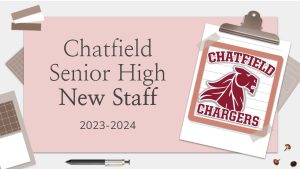The Viability of Video Games in the Classroom
In mass media, video games are criticized as violent and dangerous to young audiences. However, could it be useful for students?
November 1, 2019
When it comes to opposing activities, few things come to mind quicker than video games and school. The pair rarely comes together, and usually only meets in the form of educational games. However, what if that were to change? What if regular gaming could become involved in the classroom, much in the same way that E-Sports has involved itself in extracurricular activities?
Before beginning, there are a few problems that bar the way. First and foremost, especially for public schools, many of these games can be costly, considering that player limits and high-end computers are a concern. The other elephant in the room is the stigma surrounding video games as a whole – mainly the influence of violence or other subjects. To avoid both of these problems, a school’s best bet would be the genre known as ‘local multiplayer’.
The genre of local multiplayer is where a single copy of the game can hold multiple players in the same space, usually by using multiple input devices (such as gaming controllers, keyboards, or mice). Games already in the classroom, such as the rather infamous Kahoot, avoid the problem of costly controllers by using mobile devices, things that most students already own and have readily available.
One of the main fronts of the local multiplayer genre is cooperation with those nearby. Such cooperation requires critical thinking to solve puzzles and can be a fantastic icebreaker to introduce classmates to each other. For example, culinary arts classes could use the game Overcooked, developed by Ghost Town Games, to introduce students to the people they’ll be working with. The fast pace, as well as the gameplay itself, can be a fun way for students to also get used to the atmosphere of the kitchen itself.
Similarly, local multiplayer games can operate in teams, whereas one team tries to beat another. An odd example of such a style is Regular Human Basketball, developed by Powerhoof, where players operate a “human” in unison to play basketball. Such a bastardized version of basketball could be an interesting way to get people in sports to know their coach and teammates.

A short tutorial of how to control a “human” in Regular Human Basketball.
When it comes to additional education values aside from critical thinking or cooperation, games normally don’t utilize them (the exception being history, usually pertaining to wars). The difficulty of associating games with the classroom is this exact problem. When games are introduced, students can find it difficult to be involved, as the games themselves can be an obvious gimmick to reach the real learning objective. Realistically, the medium of school and games is not easily breached. One solution, perhaps, is to have students be that medium.
One may ask how students can be the medium between school and games. For the classroom, this is quite simple. Rather than have the game provide pre-selected answers, students would develop the answers themselves. In fact, this sort of system is already in place and works quite well, especially in Language Arts. Students are required to become involved, and discussion means that the true learning objectives such as problem-solving skills, team work, communication, and using past experiences to determine future behavior can be obtained as a group. A game of this caliber is Quiplash, developed by Jackbox Games. Players enter answers to bizarre topics on their mobile devices and compete with others for what the objectively best answer to the topic is. The incorporated aspect of humor in the game can be spread to the discussions in class, meaning that many of the more serious subjects can be seen through a different perspective. However, the theory of video games in the classroom is still just a theory. Therefore, Mrs. Buzanis’ class decided to test the possibility.
After a brief intermission, the class decided to play Quiplash 2. After the first round, with only three players, one thing became increasingly obvious: free responses meant that the maturity of the students is a determining factor in what they take away from the experience. Shortly thereafter, more students joined in, increasing the overall experience of the game. While not strictly based on classroom topics, the game did give an option for questions to be custom-made, meaning that, should a teacher choose to do so, the questions could be geared towards more specific topics.
More than anything, video games in the classroom heavily depend on student interaction. More social students will have an easier time with the local multiplayer genre, and the anonymity of some games can help less social students propose interesting thoughts without worry. Should video games be entered into the common curriculum, the utmost care needs to be taken. As technology becomes more and more prevalent in schools, it’s only a matter of time until such a subject becomes a serious consideration everywhere.












